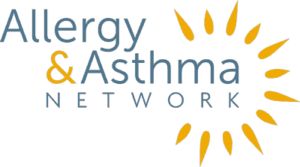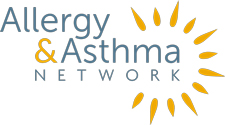
Every year, wildfires spread in areas of the United States, devastating communities and filling the air with harmful smoke that can cause breathing problems.
Wildfire smoke and ash can irritate your eyes, nose, throat and lungs. People with asthma and COPD, children with developing lungs, the elderly, pregnant women, and outdoor workers are at greater risk for symptoms.
Wildfires can happen anywhere. And wildfire smoke can travel thousands of miles. California, Texas, Colorado, Arizona, Oklahoma, Washington, Oregon and Idaho are among the top states prone to wildfires every year. In 2023, wildfire smoke traveled from Canada to the East Coast and Midwest.
What are wildfires?
A wildfire is an unplanned fire burning in a natural area such as a forest. They are often caused by lightning, but humans can also cause them when they burn debris, set off fireworks, fail to attend to campfires or even toss burning cigarettes on the ground. The risk for wildfires increases when there’s little rain and high winds.
How do wildfires affect people with asthma?
Wildfires can cause lung irritation and inflammation when you inhale small particles of smoke, leading to coughing, wheezing and shortness of breath.
Smoke from wildfires can travel thousands of miles – depending on the amount of fire and smoke as well as the wind patterns, which can change daily or weekly. So even if you live far away from a wildfire, you still may experience health problems related to it.
How do I avoid wildfire smoke if I have asthma?
- First you should have an emergency plan in place in case you must evacuate your home.
- Check local air quality reports from the U.S. Environmental Protection Agency at AirNow.gov. There is also a “Wildfires” page at AirNow.gov/wildfires where you can check a map for smoke and wildfires and find resources. It’s important to note that smoke from wildfires can stay in the air for days, even after the wildfire has ended, so monitor air quality daily.
- If you think wildfire smoke is in the air, stay indoors as much as possible. Keep windows and doors closed. Turn on your air conditioner and set it to recirculate mode – be sure to use high efficiency particulate air (HEPA) filters to remove fine particles of smoke that may be in the air.
- If you spend most of your time in one room, make sure it’s closed off to outside air. Set up a portable air cleaner to help keep the air clear in that room.
- Avoid physical activity outdoors where you breathe heavily, forcing you to potentially inhale smoke particles at a faster rate.
- If you must go outside, make sure you keep your quick-relief asthma inhaler close by in case symptoms arise.
Is there a mask I can wear to prevent exposure to wildfire smoke?
The U.S. Centers for Disease Control and Prevention (CDC) recommends you wear a “respirator” – a type of mask that fits tightly to your face to filter out smoke before you can breathe it in.
Respirators are sold at pharmacies, some supermarket and convenience stores, and hardware and home repair stores. Choose a “particulate respirator” that is a N95 or P100 mask approved by the National Institute of Occupational Safety and Health (NIOSH). Be sure it fits securely over your mouth, nose and chin.
Avoid using cloth masks, which offer little protection as they do not catch most of the small particles of smoke.
Respirator masks are being used by healthcare workers during the COVID-19 pandemic and may be in short supply. These respirator masks are critical supplies that at this time are reserved for healthcare workers and other first responders, CDC says.
Does exposure to wildfire smoke put you at higher risk of severe COVID-19?
The combination of the COVID-19 virus and wildfire smoke is potentially dangerous. A Harvard University study published in August 2021 has found evidence that exposure to high levels of fine particle pollution in wildfire smoke can put you at higher risk for hospitalization and death from COVID-19.
On its website, CDC says wildfire smoke can harm the lungs and make you more prone to lung infections, including COVID-19.
Smoke exposure and COVID-19 symptoms can overlap. Dry cough, sore throat and difficulty breathing are symptoms of both. COVID-19 symptoms may be accompanied by fever or chills, muscle or body aches, loss of taste or smell, and diarrhea.

 810304 Eaton Place, Suite 100
810304 Eaton Place, Suite 100